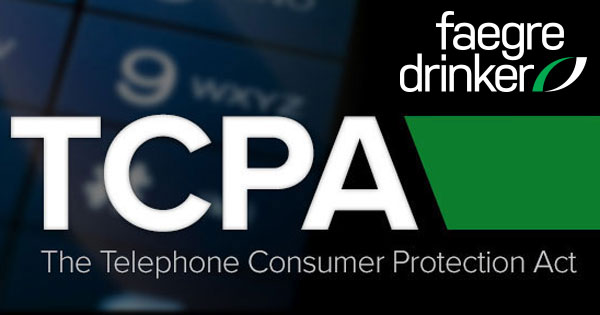The United States District Court for the Middle District of Florida (J. James D. Whittemore) recently granted LTD Financial Services, L.P.’s motion for partial summary judgment in a TCPA case involving pre-recorded calls allegedly placed to plaintiff’s cellular telephone. See Estrella v. LTD Financial Services, LP, No. 14-2624, 2015 U.S. Dist. LEXIS 148249 (M.D. Fla. Nov. 2, 2015). As we have previously covered, district courts across the country have demonstrated a willingness to dispose of cases where the records fail to establish that the calls or text messages at issue were sent using an automatic telephone dialing system (“ATDS”).
In Estrella, the defendant argued it was entitled to summary judgment because there was no evidence to support the plaintiff’s claim that defendant had placed calls to his cell phone using an ATDS or artificial or prerecorded voice, and that the record, in fact, evidenced that each of the alleged calls at issue had been dialed manually. Id. at *2, 5. Indeed, defendant’s senior vice president had testified that each of the relevant calls had been placed manually by defendant’s employees using a “point and click function.” Id. at *5. This function required defendant’s employees to determine which of the phone numbers on the account they wished to call and to then affirmatively click on the desired phone number before the call would be launched. Id. at *5-6. Defendant’s senior vice president also testified that none of the calls made to plaintiff used an artificial or prerecorded voice. Id. at *5.
Plaintiff attempted to refute defendant’s arguments by submitting an unsworn declaration averring that plaintiff “could tell” defendant was using an ATDS to make the calls because plaintiff would hear “a prolonged silence” and “delays and clicks” upon answering defendant’s telephone calls. Id. at *6. Although the Court first noted that plaintiff’s declaration was neither sworn nor in compliance with 28 U.S.C. § 1746 and therefore could not be considered by the Court in ruling on defendant’s summary judgment motion, the Court nevertheless concluded that the statements contained in plaintiff’s declaration did not establish that defendant used an ATDS to place the calls. Id. at *9. The Court reasoned that, even if accepted, the statements set forth in the declaration did not establish that defendant had used “‘dialing equipment’ that ‘has the capacity to store or produce, and dial random or sequential numbers,’ or that the calls were made using a predictive dialer.” Id. (citing 47 U.S.C. § 227(a)(1); In the Matter of Rules & Regulations Implementing the Tel. Consumer Prot. Act of 1991, 30 FCC Rcd 7961, 2015 WL 4387780 (July 10, 2015)). The Court further explained that “[t]he essential function of an ATDS is ‘the capacity to dial numbers without human intervention.’” Id. at *3 (citing In the Matter of Rules & Regulations Implementing the Tel. Consumer Prot. Act of 1991, 18 FCC Rcd 14014, 2003 WL 21517853 (July 3, 2003)). The Court also noted that there was “no foundation or support for plaintiff’s conclusion that ‘clicks and delays’ and “prolonged silences’ means that an ATDS or predicative dialers was being used to place the calls.” Id. at *10.
In holding that the evidence failed to demonstrate that the defendant had used an ATDS to place calls to plaintiff, the Court also rejected plaintiff’s “broad assertions” that defendant used two predictive dialing systems – Caste Connects and Avaya – that plaintiff claimed “‘are considered to have the present capacity to autodial such that they are an [ATDS].’” Id. The Court rejected plaintiff’s argument, explaining that, while plaintiff’s claim may be true, there was no evidence in the record that defendant used either of those predictive dialing systems to make the calls at issue. Id. at *11.

